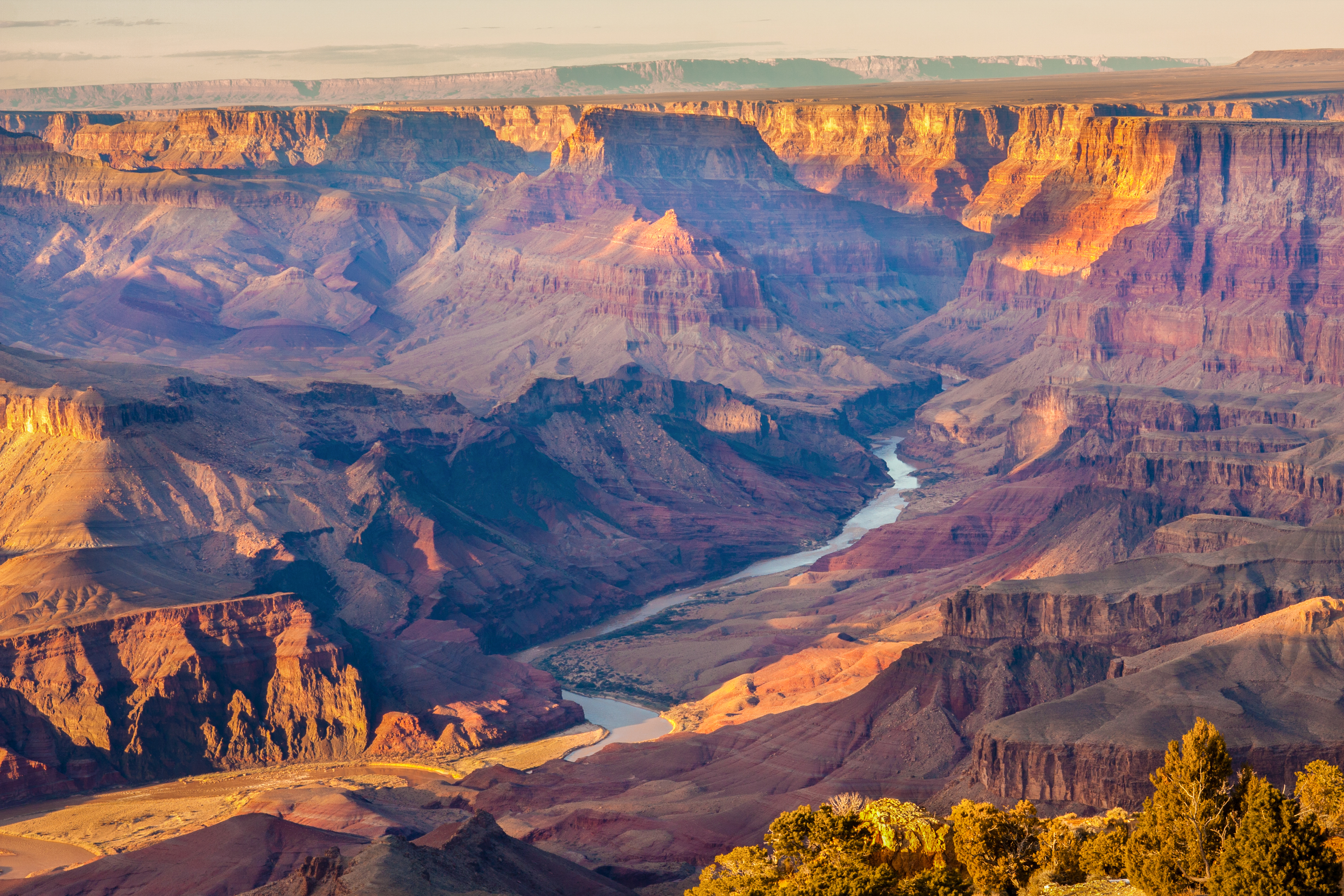Telling a Geological Tale

"Thine are the heavens, the earth also is thine; the world and its fullness, thou hast founded them"
The Grand Canyon
Grand Canyon strata show geologic time is imaginary:
Visitors to the Grand Canyon hear the usual geological interpretation involving millions of years. We are told that the horizontal formation at bottom, the tapeats sandstone, was deposited 550 million years ago, and that the kaibab limestone that forms the rim is 25 millions years old. It is difficult to imagine the immense time involved in this interpretation.
Interestingly, the Grand Canyon strata extend over 400 kilometers (250 miles) into the eastern part of Arizona. There, they are at least 1,600 meters (one mile) lower in elevation. Supposedly, the uplift of the Grand Canyon area occurred about 70 million years ago – hundreds of millions of years after the sediments were deposited. One would expect that hundreds of millions of years would have been plenty of time for the sediment cement into hard rock. Yet the evidence indicates that the sediments were soft and unconsolidated when bent. Instead of fracturing like the basement did, the entire layer thinned as it bent.
The sand grains show no evidence that the material was brittle and rock-hard, because none of the grains are elongated. Neither has the mineral cementing the grains been broken and recrystallized.
Instead, the evidence points to the whole 1,200 meter (4,000 feet) thickness of strata being still "plastic" when it was uplifted. In other words, the millions of years of geologic time are imaginary. This "plastic" deformation of Grand Canyon strata dramatically demonstrates the reality of the catastrophic global flood of Noah’s day.
Australia’s Great Barrier Reef
A coral reef is a mass of limestone created as the polyps build their skeletons. How long it takes these reefs to form is a matter of conjecture.
It is commonly believed the existence of thick coral reefs proves the earth must be millions of years old, based on the assumption that coral growth was slow.
However, the discovery in 1992 of a substantial wad of coral growing firmly attached to modern shoe (less than four years old at the time) in the waters of the Philippines is just one indicator among many that this is not the case.
Marine biologists have discovered that coral contains growth rings, like those of tree. A study by the Australian Institute of Marine Science has found a connection between coral growth rates and seasonal freshwater run-off or floods from nearby land.
From strongly correlated historical records of river run–off and flooding, the researchers determined that the coral colony in question had taken only 118 years to grow 1.8 meters (6 feet).
This gave them new method for determining the age of all reefs that make up Australia’s Great Barrier Reef. Based on this methodology, the outer barrier reefs (those furthest from the Australian coast and in the deepest water), which are about 55 meters (180 ft) thick, would be less than 3,700 years old – not millions of years old as has been believed.




